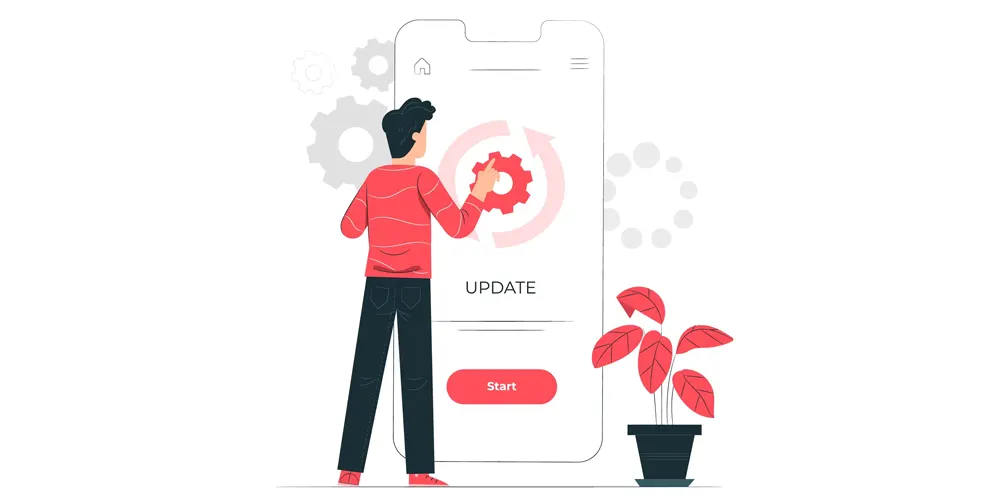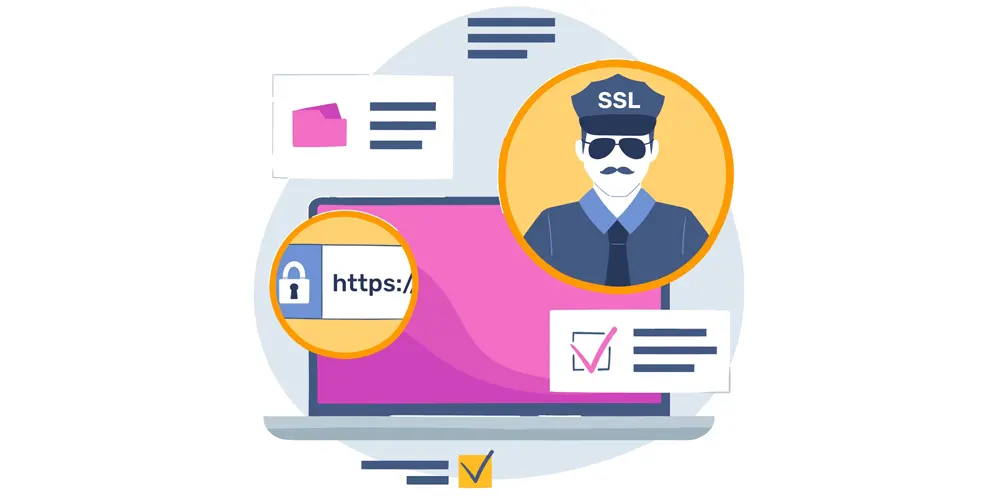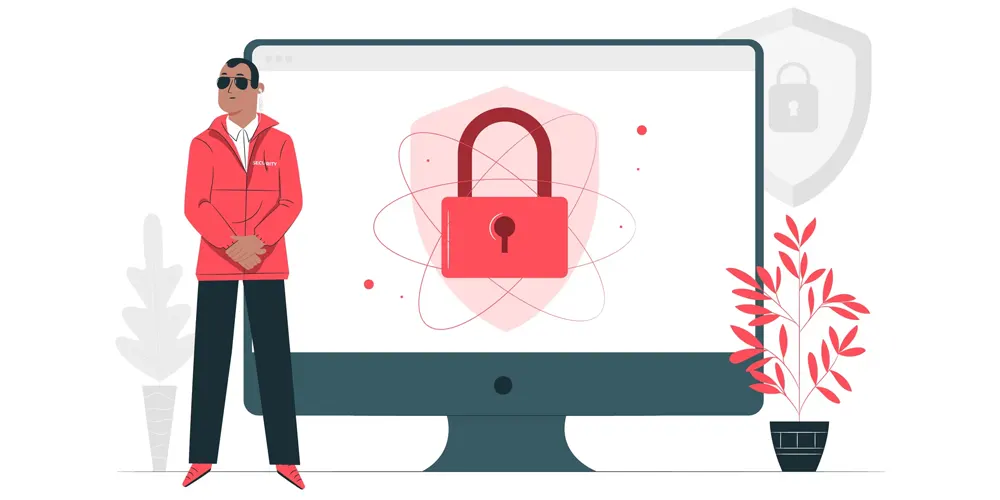10-Point Security Checklist for VoIP Carriers
The world is all about maintaining the balance. That means for every good actor in the industry, there are bad counterparts trying to sabotage everything. The world of VoIP is no stranger to such bad actors.
A lot of important and sensitive information is exchanged over VoIP. Moreover, the records of communication by themselves are a valuable source of information for many bad actors. Thus, it becomes very much necessary to secure your VoIP network.
Wondering how you can achieve this? I'm sure you’re not alone. This blog will take you through a powerful 10-point Security Checklist for VoIP Carriers.
Once implemented, you will not have to worry as much about the safety and security of your business and its customers. Let’s get started then, shall we?
Point 1: Implement Strong Authentication Mechanisms

Considering the sensitive nature of work, it is not enough to just have strong passwords. There are multiple ways in which passwords can be cracked. While the bad actors have to get lucky just once, you have to ensure safety at all times.
This is where Two-Factor Authentication comes in for VoIP Security. Two-Factor Authentication involves requiring users to provide two separate authentication factors before granting access to a system.
This significantly strengthens security by adding an extra layer of verification beyond the traditional username and password. Here is how it helps you secure your networks.
1. Mitigating Password Vulnerabilities: Passwords alone can be compromised through various means like hacking, phishing, or social engineering. By introducing a second authentication factor, even if a password is stolen, gaining unauthorized access remains difficult for any bad actors.
2. Authentication Factors Diversity: 2FA employs two different types of factors: something the user knows (password) and something the user possesses (token, device, etc.). This diversity in factors makes it considerably more challenging for attackers to breach the network.
3. Reducing Credential Theft Impact: If an attacker manages to obtain a user's password, they still need the second authentication factor to gain access. This extra step acts as a significant deterrent, reducing the potential impact of stolen credentials.
4. Enhancing User Verification: The second factor often involves something physical or unique to the user, such as a smartphone or biometric data. This ensures that the person logging in is indeed a legitimate user and not an impersonator.
5. Adapting to Modern Threats: With the increasing sophistication of cyber threats, 2FA provides an adaptive approach to security. It's more resilient against tactics like brute-force attacks, where an attacker attempts to guess a password.
Here is how you can implement Two-Factor Authentication (2FA) is vital for securing a VoIP carrier's network. Here are the important components.
- Admin Panels:
Admins undergo 2FA, combining passwords with biometric factors or time-based codes. Hardware tokens or authentication apps provide additional security layers.
- User Accounts:
Users receive one-time codes via SMS, email, or authentication apps. Mobile apps generate time-based codes, enhancing login protection.
- Critical Components:
Devices can be paired, allowing access only when matched with authorized systems. Geolocation restrictions ensure access from specific locations, hindering unauthorized entry.
- Best Practices:
Educate users on 2FA's importance and proper usage. Role-based access control assigns permissions based on roles, minimizing exposure. Regular audits track access logs, spotting anomalies promptly.
By implementing 2FA, the VoIP carrier elevates security levels, safeguarding sensitive areas against unauthorized access attempts and bolstering network integrity.
Point 2: Regularly Update and Patch Software

Businesses have been making extensive use of technology in the present day and age. This means having multiple different systems integrated and working together.
In case even a single system is compromised, bad actors can gain access to your entire network and things go downhill from that point. The solutions? Updating and patching your entire tech stack regularly!
This strategy allows VoIP Carriers to fortify their network security. The following points underscore its significance:
1. Current Security Patches: Keeping software and hardware up to date ensures that the latest security patches are applied promptly. These patches address known vulnerabilities, minimizing the potential avenues for exploitation by attackers.
2. Outdated Software Risks: Yeah, your Windows 7 system works well but it's no longer secure. Operating with outdated software poses substantial risks. Unpatched vulnerabilities become open invitations for cybercriminals to breach the system. Hackers often target known weaknesses that are not mitigated through updates.
3. Reduced Attack Surface: Regular updates shrink the attack surface. Each security patch eliminates vulnerabilities, closing entry points that hackers could exploit. This proactive approach is crucial for preventing unauthorized access.
4. Mitigated Zero-Day Threats: Rapid software updates guard against zero-day vulnerabilities—flaws unknown to developers but discovered by malicious actors. Prompt updates make it significantly harder for attackers to capitalize on these vulnerabilities.
5. Enhanced System Stability: Updated software doesn't just bolster security; it also improves system stability and performance. This reliability ensures uninterrupted VoIP services, avoiding potential downtime and data breaches.
6. Compliance and Reputation: Many industry regulations mandate timely updates to maintain security standards. Compliance ensures the carrier's operations align with best practices, fostering trust and a positive reputation.
While we know how everyone dreads those Windows Update Screens, keeping everything patched and updated is important. I hope you now leave the auto-update function running on your system.
Point 3: Encryption for Data in Transit and at Rest

A lot of sensitive and mission-critical information is regularly exchanged over calls. The most security-sensitive among all industries are the banking, governments and Research and Development sectors.
Additionally, the data that Carriers holds has value to a lot of bad actors. Thus, all carriers need to ensure that their data at rest is also protected.
Employing encryption for both data in transit and at rest is a cornerstone of network security for a VoIP carrier. The following points highlight its significance:
1. Secure Data Transmission: Implementing robust encryption protocols like Transport Layer Security (TLS) or Secure Sockets Layer (SSL) for voice data transmission shields it from interception and eavesdropping.
This ensures that conversations remain confidential and uncompromised during their journey through the network. Please note that this is only useful for industries that need secure communication viz. banking and governments.
2. Mitigated Eavesdropping: Encryption during transmission safeguards against unauthorized eavesdropping, which is particularly crucial for VoIP carriers where voice conversations traverse the internet. Encryption prevents malicious actors from intercepting and deciphering sensitive voice data.
3. Data Integrity: Encryption not only maintains confidentiality but also ensures data integrity. It prevents tampering with voice data during transmission, guaranteeing that the information remains unaltered and trustworthy.
4. Protection of Stored Data: Encrypting stored voice data prevents unauthorized access. Even if attackers breach the network and gain access to stored data, encryption makes it incredibly challenging for them to extract any meaningful information.
5. Compliance Adherence: Many industries and regions mandate encryption to meet regulatory compliance. Adhering to encryption standards ensures the VoIP carrier's operations align with legal requirements, avoiding potential penalties.
6. User Trust and Reputation: Employing encryption instills user trust by showcasing a commitment to security. Users are more likely to engage with a VoIP carrier that prioritizes the privacy and security of their conversations, enhancing the carrier's reputation.
7. Holistic Security Strategy: Encryption complements other security measures, forming a multi-layered defense against potential breaches. It adds an essential layer to safeguarding both real-time conversations and stored data.
So there is a lot of ground to be covered when it comes to securing calls and related data at rest. Ensure you consider your ideal and potential clients when implementing security measures.
Point 4: Network Segmentation and Access Controls

Segmentation has been used as a form of security measure since before the time of mainstream computer technology. This approach not only allows you to safeguard critical intellectual property but also helps minimize damage even if a leak occurs.
Network segmentation and access controls play a pivotal role in fortifying the security of a VoIP carrier's network. The following points outline their significance:
1. Segmented Network Structure: Dividing the network into segments creates isolated zones, limiting lateral movement for attackers. If one segment is compromised, the attacker's ability to move freely across the network is restricted. This significantly minimizes the potential scope of the breach.
2. Traffic Flow Control: Firewalls and access control lists (ACLs) act as gatekeepers. They regulate the flow of traffic between network segments. This ensures that only authorized communication occurs, reducing the risk of unauthorized access and data breaches.
3. Anomaly Detection: Intrusion detection and prevention systems (IDS/IPS) monitor network traffic for unusual patterns. They swiftly identify anomalies, malicious activities, or unauthorized attempts. Alerts are triggered to allow for rapid responses to potential threats.
4. Resource Isolation: Segmentation isolates critical resources. VoIP infrastructure, customer databases, and administrative panels can be separated. This limits the exposure of sensitive components to potential attackers.
5. Limiting Attack Surface: By confining access to authorized segments, the attack surface is minimized. This significantly reduces the opportunities for attackers to exploit vulnerabilities and compromise the network.
6. Quick Containment and Recovery: In case of a breach, segment isolation prevents attackers from moving laterally to other parts of the network. This containment ensures easier recovery and reduces the impact of a potential breach.
Fine-Tuned Access Management: Access controls within each segment enable fine-tuned permission management. Only individuals with legitimate reasons to access certain areas can do so, ensuring the least privileged access.
Point 5: Regular Security Audits and Penetration Testing

Performing these activities can be resource intensive. However, for VoIP Carriers serving security-sensitive industries such as insurance, banking, finance, legal and military, performing these can at times be very necessary.
Just because a system “looks secure” doesn’t mean it is. The best thing you could do is put your system to the test and find out how well it does when put up against real-world threats.
Here are all the things you could do to thoroughly test your system against security threats:
1. Vulnerability Identification: Routine security audits systematically assess the VoIP system. Thus uncovering vulnerabilities and weaknesses that could be exploited by attackers. This proactive approach allows the carrier to address issues before they are leveraged by malicious actors.
2. Real-World Simulation: Penetration testing goes beyond audits by simulating real-world attacks. Ethical hackers attempt to breach the network, mimicking actual adversaries. This process uncovers potential entry points and exposes vulnerabilities that might not be evident through audits alone.
3. Risk Assessment: Both audits and penetration testing provide insights into the level of risk the VoIP carrier's network faces. This information enables the carrier to prioritize mitigation efforts based on the severity of identified vulnerabilities.
4. Compliance Adherence: Regular assessments ensure compliance with industry standards and regulations. Many industries mandate periodic security testing to maintain a certain level of protection for customer data and sensitive information.
5. Continuous Improvement: Audits and penetration testing are part of a continuous improvement cycle. The insights gained from each assessment drive the refinement of security measures, contributing to a more robust defense strategy.
6. Early Threat Detection: Identifying vulnerabilities early allows the carrier to proactively address potential security breaches before they occur. This minimizes the impact of a successful attack and prevents potential data loss.
7. User Trust and Reputation: Demonstrating a commitment to security through regular testing and audits builds user trust. Clients and partners are more likely to engage with a carrier that actively safeguards their data and communications.
I would not recommend most carriers perform these activities at the scale of those providing service to sensitive industries. However, there are viable benefits to performing security audits and penetration testing at least on an annual basis.
Point 6: Secure Voice Traffic Routing

I'm sure that two friends talking about random things after a day at work won’t panic if someone listened in on their call. However, businesses conducting important meetings and other sensitive interactions over call will not welcome such eavesdropping.
Securing VoIP traffic from end-to-end does consume more resources. However, segmenting and securing only the sensitive traffic is one way to optimize resource consumption.
Here are all the things you can look into:
1. Preventing Call Interception: Implementing stringent security measures thwarts call interception attempts. By ensuring that only authorized parties can access and decipher voice data, the carrier safeguards conversations from being intercepted by malicious actors.
2. Mitigating Eavesdropping: Voice traffic, if left unprotected, is susceptible to eavesdropping. Employing encryption mechanisms shields voice data as it traverses various network segments.
3. End-to-End Encryption: Employing end-to-end encryption ensures that voice data is encoded at the sender's end and decrypted only at the intended recipient's end. This strategy prevents unauthorized access at every step of the communication process.
4. Secured Network Segmentation: As voice traffic crosses different network segments, encryption mechanisms maintain security. Even if a segment is compromised, the encrypted voice data remains unintelligible to attackers.
5. Confidentiality Assurance: Encryption of voice traffic guarantees the confidentiality of conversations. This is paramount for VoIP carriers that handle sensitive discussions, ensuring that customer trust is maintained.
6. Regulatory Compliance: Encrypting voice traffic often aligns with regulatory requirements for sensitive industries that handle financial information. Thus, carriers can meet these regulations and keep offering secure lines of communication.
7. Network Resilience: Secured voice traffic routing enhances the overall resilience of the network. By mitigating potential vulnerabilities, the carrier ensures a more dependable service for users.
It is advisable that you consult with each customer about their security requirements beforehand. This will further enable you to provide the required level of security to each customer. Segmenting them will allow you easy management.
Point 7: Monitor and Analyze Network Traffic

Failing to detect an intrusion or malicious activity in one’s system is among the prime causes that lead to catastrophic security failures. As they say, you cannot defend against an enemy you can't see. This necessitates strict network monitoring.
Keeping a close eye on your network and traffic will enable you to spot any instructions or malicious activity quickly. Once identified, you can undertake hard measures to prevent any breach or leak.
Here are all the important things you should look into:
1. Robust Traffic Monitoring: Establishing comprehensive monitoring tools enables continuous tracking of network traffic patterns. This allows the carrier to maintain visibility into data flows and communication activities.
2. Early Threat Detection: Through continuous monitoring, any unusual or suspicious network activities are promptly detected. Early identification of potential security breaches ensures swift intervention before they escalate.
3. Anomaly Detection: By establishing baseline traffic patterns, carriers can use monitoring tools to identify deviations from the norm. Any unexpected spikes or unusual communication behaviors are quickly flagged for further investigation.
4. Real-time Incident Response: Immediate detection of suspicious activities enables rapid incident response. The carrier can quickly mitigate potential threats, minimizing their impact and preventing data breaches.
5. Behavioral Analysis: Analyzing network traffic helps in behavioral analysis. By understanding typical communication patterns, carriers can identify deviations that might indicate unauthorized access or compromised accounts.
6. User Activity Monitoring: Network traffic monitoring provides insights into user behaviors. This allows the carrier to identify any abnormal user actions, providing a comprehensive view of the network's security landscape.
Thus, seeing and knowing everything that is happening will allow you to keep your network and customers secure.
Point 8: Employee Training and Awareness

No matter how much the technology running our world progresses, it won't be able to eliminate the human risk involved. Over 90% of the cyberattacks businesses face rely on social engineering to gain access to a business’s network.
Thus ensuring your employees are aware of the security risks and training them to prevent these mishaps becomes necessary.
Here are all the important points you need to consider:
1. Comprehensive Training: Offering thorough training equips employees with the knowledge they need to navigate potential security risks. They gain a deeper understanding of security protocols, ensuring consistent adherence.
2. Social Engineering Awareness: Educating employees about social engineering tactics hone their ability to recognize manipulative strategies. They become adept at identifying attempts to extract sensitive information through manipulation.
3. Phishing Defense: Knowledge about phishing empowers employees to spot fraudulent emails and links. Training helps them identify red flags and avoid interacting with malicious content, minimizing the risk of data breaches.
4. Threat Recognition: Educated employees can identify potential threats before they escalate. Recognizing suspicious activities or unusual behaviors enables them to take preventive action.
5. Human Firewall: Trained employees become a strong defense line against cyber threats. Their awareness creates a "human firewall," reducing the risk of successful attacks that leverage human error.
6. Personal Responsibility: Training instills a sense of personal responsibility among employees. They actively contribute to the network's security by following protocols and maintaining vigilance.
7. Crisis Management: In the event of a security incident, trained employees know how to respond appropriately. Their actions can mitigate the impact of breaches and limit potential damage.
Now while it's not possible to eliminate the human risk, training and awareness can reduce it significantly. Technology can then step in and create an overlap of security measures to ensure there aren't any weaknesses in your network.
Point 9: Disaster Recovery and Business Continuity Plans

There are two important thoughts that I’ve built my life around. First is Murphy's law which states, “Anything that can go wrong, will go wrong.” The second is, “Hope for the best but be prepared for the worst.”
Now I'm not sure if it was Zig Ziglar or Maya Angelou who put forth the second idea but the point is that it applies to so many things.
Thus, having Disaster Recovery (DR) and Business Continuity Plans (BCP) are integral to network security for a VoIP carrier. The following points underscore their significance:
1. Uninterrupted Operations: A well-developed DR plan ensures that even in the face of a security incident, business operations continue seamlessly. This prevents service disruptions and maintains customer satisfaction.
2. Data Protection: DR plans safeguard critical data, ensuring its availability and integrity during and after a security breach. This protection minimizes the risk of data loss and maintains user trust.
3. Rapid Recovery: When a security incident occurs, a comprehensive DR plan facilitates swift recovery. Well-defined procedures and resource allocation enable the carrier to bounce back quickly.
4. Resilient Network: BCP ensures that the network remains resilient by outlining strategies to maintain operations under adverse conditions. This minimizes vulnerabilities and enhances overall network security.
5. Proactive Approach: Regular testing of DR and BCP plans proactively identifies weaknesses and areas for improvement. Addressing these gaps enhances the network's preparedness for potential threats.
6. Risk Mitigation: Testing validates the effectiveness of the plans in real-world scenarios, enabling the carrier to address vulnerabilities before they escalate into major security incidents.
7. Crisis Management: DR and BCP plans provide a structured framework for crisis management. By following predefined procedures, the carrier can efficiently navigate security breaches and maintain control over the situation.
With these plans in place, your business will be adept at dealing with any crisis situations that may arise.
Point 10: Compliance with Regulations and Standards

There have been a lot of changes recently to the rules and regulations concerning telecommunication all around the world. The focus of these changes and updates has been data privacy and security.
Now it might look like an unnecessary additional activity that you may have to do, however, being compliant with regulations is beneficial in many ways. To start with, not being imposed with big fines should be a strong motivator.
Secondly, following these regulations will result in you having a safer and more secure network. Refer to the following points to understand its significance:
1. Data Protection and Trust: Adhering to industry regulations like HIPAA or GDPR ensures that customer data is handled with the utmost care. Compliance safeguards sensitive information, fostering trust among users.
2. Legal Requirements: Regulations impose specific security measures that must be followed. Complying with these measures helps the carrier avoid legal repercussions and potential penalties for non-compliance.
3. Privacy Assurance: Meeting regulatory requirements assures customers that their privacy is a priority. This commitment enhances the carrier's reputation and encourages users to entrust their data to the network.
4. Risk Mitigation: Regulations often align with security best practices. Implementing these practices minimizes vulnerabilities, reducing the risk of data breaches and unauthorized access.
5. Adaptive Security: Regularly staying updated with changes in regulations allows the carrier to adjust its security practices accordingly. This adaptability ensures compliance even in the face of evolving threats.
6. Competitive Edge: Complying with regulations can differentiate the carrier from competitors. Demonstrating a commitment to user data protection attracts customers seeking secure communication platforms.
7. Efficient Incident Response: Regulations often stipulate response protocols in case of security incidents. Following these guidelines ensures a more efficient and effective crisis management strategy.
So long story short, compliance with regulations can help you save from prosecution, fines and losing customers.
Final Words
In a rapidly advancing technological landscape, the threats we face are evolving too. The importance of keeping your network, systems and customers safe from bad actors cannot be understated.
You may already have implemented some checkpoints in the VoIP Security Checklist. However, in case you haven’t, start with one point at a time. Now, it might look complicated at first but it's very well necessary.
If you’re wondering if there is an easier way to keep everything secure, let me tell you that there is one way. ConnexCS! We have everything you might need to secure your network and keep your customers safe.
Sign up today and secure your calls and business!























































































































